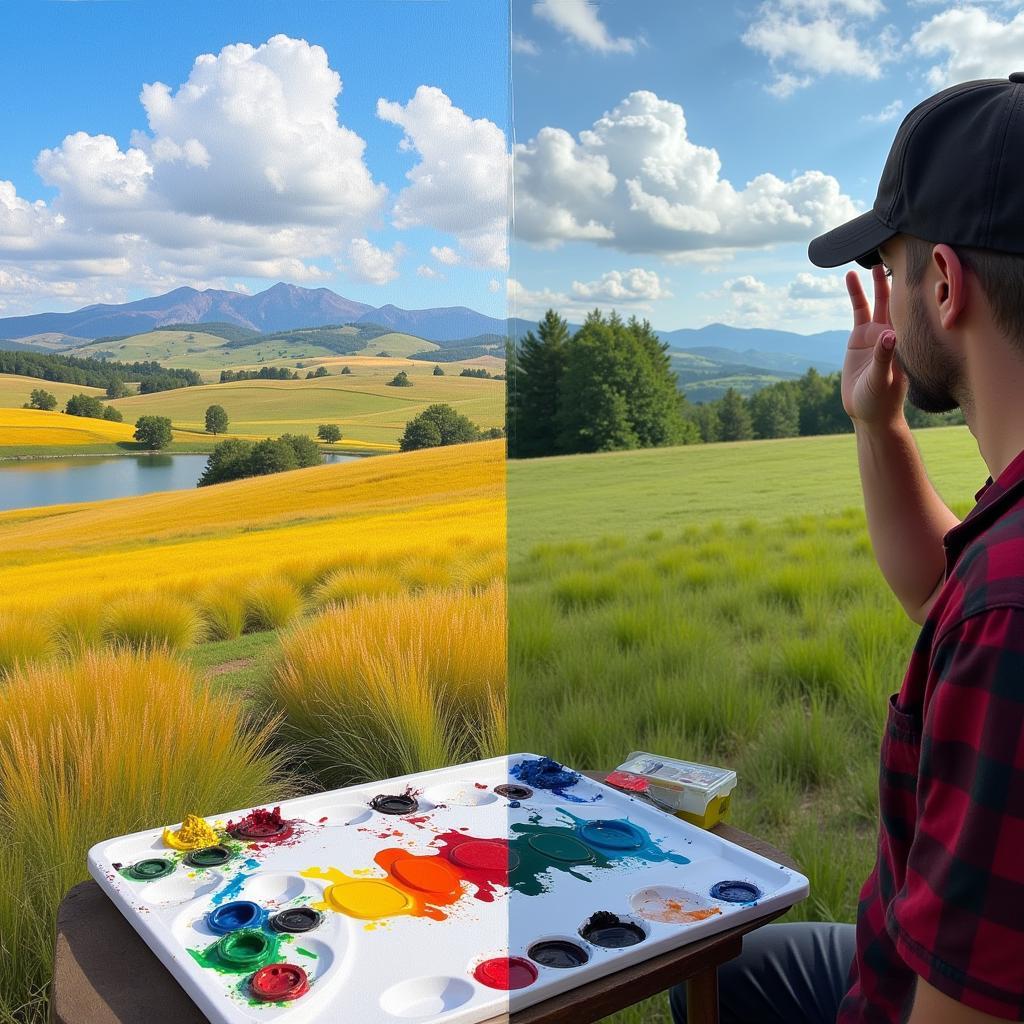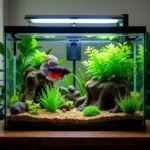Understanding color and translating that vision onto canvas or a wall is a multifaceted skill that blends perception, technique, and a touch of artistic intuition. It’s more than just dipping a brush in paint; it’s about truly seeing color, understanding its nuances, and then recreating it with confidence. This guide will delve into the world of color, exploring how to train your eye, mix paints effectively, and ultimately, paint what you see.
Choosing the right paint is a crucial step in achieving the desired color. Understanding different paint types, finishes, and their interaction with light is essential. For example, a matte finish absorbs light, creating a rich, deep color, while a gloss finish reflects light, making colors appear brighter. Furthermore, the surface you’re painting on plays a role. A porous surface like wood will absorb more paint and potentially alter the final color compared to a non-porous surface like metal. So, consider these factors when selecting your paints. It’s also useful to know that some colors are more challenging to mix than others, and pre-mixed paints can offer a convenient solution for specific hues.
Deciphering the Language of Color
Seeing color isn’t solely a physiological process; it’s also about understanding the language of color: hue, saturation, and value. Hue refers to the pure color, like red, blue, or green. Saturation describes the intensity or vibrancy of the color, ranging from dull to vivid. Value relates to the lightness or darkness of a color. Learning to differentiate these aspects is key to accurately mixing and applying colors. Begin by practicing with a limited color palette, observing how colors interact with each other. Try mixing different hues to create secondary colors, and then experiment with adjusting saturation and value by adding white, black, or gray.
Mixing the Perfect Shade
Mixing paint can feel like alchemy, but with practice and understanding of color theory, it becomes a controlled process. Start with a small amount of each color and gradually add more until you achieve the desired hue. Remember, it’s easier to darken a color than to lighten it. Keep a record of your mixing ratios for future reference. For example, a specific shade of green might be achieved by mixing two parts blue to one part yellow. Documenting these mixtures will save you time and ensure consistency in your work, especially for larger projects.
From Observation to Application: How to See Color and Paint It
This process involves carefully studying your subject, breaking it down into its constituent colors, and then recreating those colors on your chosen medium. Squint your eyes slightly to blur the details and focus on the overall color impression. Identify the dominant hues, then examine the subtle variations in saturation and value.
 Painting a Landscape Using Observation Technique
Painting a Landscape Using Observation Technique
Mastering the Art of Color Mixing
Mixing colors accurately involves more than just combining paints; it’s about understanding the undertones and how they influence the final result. For example, adding a touch of red to a green can create a warmer, more earthy tone, while adding blue can cool it down. Experiment with different combinations to see how these undertones affect the overall color.
how to see color and paint it arthur stern
Lighting and Its Impact on Color Perception
Light plays a crucial role in how we perceive color. The same object can appear vastly different under different lighting conditions. Natural daylight reveals the truest colors, while artificial light can cast a yellow or blue tint. Consider the lighting conditions when painting, and adjust your colors accordingly. You might even want to simulate different lighting conditions in your studio to understand how your painting will appear in various settings.
Common Challenges and Solutions in Color Mixing
Color mixing can present various challenges, such as achieving consistent results or mixing specific hues. One helpful technique is to create a color chart by mixing small amounts of various paints and documenting the ratios used. This chart can serve as a valuable reference guide for future projects. Understanding the properties of different paint types, such as acrylics, oils, and watercolors, is also essential, as each behaves differently and offers unique possibilities.
Tips for Enhancing Your Color Perception
Training your eye to see color more accurately takes practice. Regularly observe your surroundings, paying attention to the subtle nuances of color in everyday objects. Visit art galleries and study the works of master painters, analyzing how they use color to create depth, mood, and emotion. This active engagement with color will enhance your perception and inform your own artistic practice.
Why is accurate color mixing important?
Accurate color mixing is essential for achieving realistic representations, creating specific moods, and maintaining consistency in your work. It allows you to capture the subtleties of light and shadow, the vibrancy of a flower, or the muted tones of a winter landscape.
“Color is a powerful tool. Understanding its intricacies allows you to evoke emotions, tell stories, and create a world on canvas.” – Amelia Dubois, renowned colorist and art educator.
What are the basic color mixing principles?
The basic principles involve understanding primary, secondary, and tertiary colors, as well as the concepts of hue, saturation, and value. Experimenting with different combinations and observing how colors interact is key to mastering color mixing.
“Seeing color is a skill that can be honed with practice. The more you observe, the more you’ll understand the interplay of light, shadow, and color in the world around you.” – James Carter, award-winning landscape artist.
con que colores combina el verde olivo
How do I mix vibrant colors?
Vibrant colors are achieved by using high-quality paints with strong pigments and avoiding over-mixing, which can dull the intensity. Understanding complementary colors also plays a crucial role in creating vibrant contrasts.
is espresso color black or brown
In conclusion, learning how to see color and paint it is a journey of discovery and continuous learning. By understanding the principles of color theory, practicing mixing techniques, and developing a keen eye for observation, you can transform your vision into reality. Embrace the process, experiment, and enjoy the vibrant world of color!
FAQ
- What are the primary colors?
- The primary colors are red, yellow, and blue.
- How do I make green?
- Mix blue and yellow.
- What is color value?
- Value refers to the lightness or darkness of a color.
- How can I improve my color mixing skills?
- Practice regularly and create a color chart for reference.
- What is the importance of lighting in color perception?
- Lighting significantly influences how colors appear.
- How do I mix skin tones?
- Start with a base of white, then add small amounts of yellow, red, and brown until you achieve the desired shade.
- What is the difference between hue and saturation?
- Hue is the pure color, while saturation is the intensity of the color.
Need assistance with your next painting project? Contact us at 0373298888, email us at [email protected], or visit us at 86 Cau Giay, Hanoi. Our 24/7 customer service team is ready to help.

